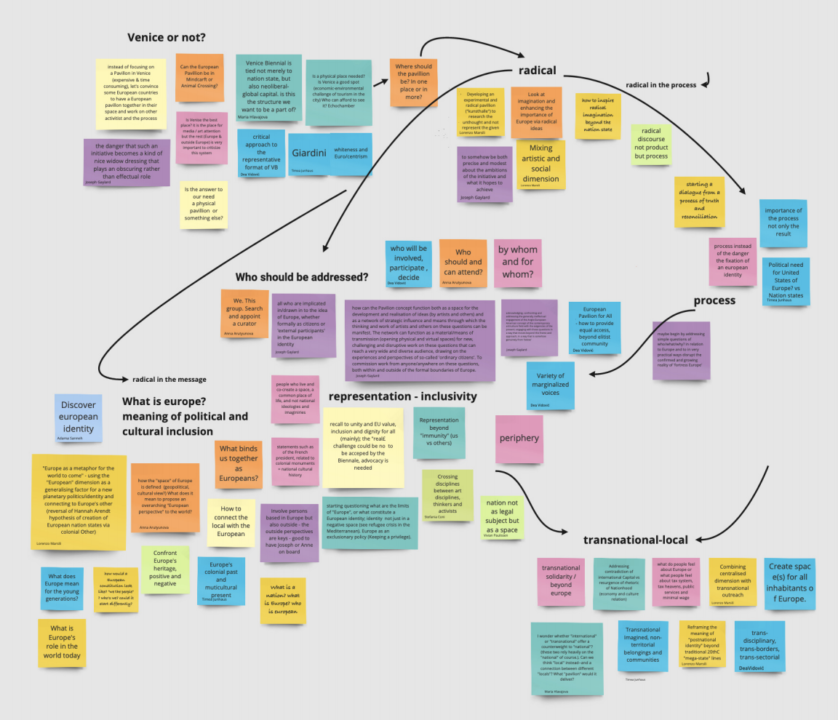The European Pavilion: Kick off meeting
22 Feb 2021
In July 2020, we kicked start our initiative for a European Pavilion with brainstorm meeting that brought together a group of curators, artists, and foundation representatives. The meeting was part of an exploratory process in which we gathered different perspectives and interests, and reflected on whether the creation of a European Pavilion in a completely ‘new’ way is a significant symbol of a positive European sentiment and solidarity.
Participants to the meeting included:
- Anna Arutyunova (Head Pro Helvetia Moscow, Russia)
- Julie Chénot (Director, Camargo Foundation, Cassis, France)
- Stefania Coni (International projects coordinator, Fondazione CRT, Turino)
- Joseph Gaylard (Head Pro Helvetia Johannesburg, South Africa)
- Maria Hlavajova (Director, BAK- basis voor actuele kunst, Utrecht, Netherlands)
- Timea Junghaus (Curator and cultural activist, Executive Director of the European Roma Institute for Arts and Culture in Berlin)
- Lorenzo Marsili (Founder Biennale Archipelago, Palermo, Italy)
- Simon Njame (Curator Dak’Art, African Contemporary Arts Biennial)
- Samuele Piazza (Curator, OGR- Officine Grandi Riparazioni, Turin, Italy)
- Teja Reba (Artistic director, City of Women festival, Ljubjana, Croatia)
- Adama Sanneh (Director, Moleskine Foundation, Milan Italy)
- Madeleine Schuppli (Head of Visual Arts, Pro Helvetia, Switzerland)
- Dea Vidović (Director, Kultura Nova Foundation, Zagereb, Croatia)
Four main questions informed our discussions:
- What is a European public space? Where and what are the borders of Europe (mentally, physically, symbolically)?
- How is diversity across regions, nationalities, cultural histories defining a post-colonial Europe?
- What is the meaning of the cultural statement of a European Pavilion and to whom does it appeal? How to define a new framework and develop political consciousness beyond the national, and embrace differences and frictions?
- How can the Pavilion idea look like and where can it take place? How can such an arts and cultural project engage a broad range of people emotionally?

At the end of the meeting, some key considerations emerged, on which to base the development of the European Pavilion:
The Pavilion should be a place for radical questioning of Europe rather than aiming at finding a definite answer. It should adopt a decentralized approach that allows to bridge local contexts and lived experience with the European dimension and include perspective from outside of Europe. Through a networked approach, experimental and bottom-up processes would be encouraged.
